Cleaning in the house means cleaning surfaces like floors, clothes, windows, the air, rugs and appliances. Here is a comprehensive list of different types of cleaning appliances in the house.
This website is supported by readers. As an Amazon Associate we earn from qualifying purchases.
Types of Vacuum Cleaners
1. Upright Vacuum
Upright vacuums are by far the most popular vacuum cleaners in the market. This is primarily because of how easy it is to use them. These vacuums come in a compact package that usually stays in an upright shape hence the name upright vacuums.
When it comes to design, these vacuums will usually have a rotating brush roll at the bottom with wheels that make it easy for you to push them back and forth along floor surfaces as you vacuum. The motor, dirt collection bin, and filters are usually found directly above the brush roll.
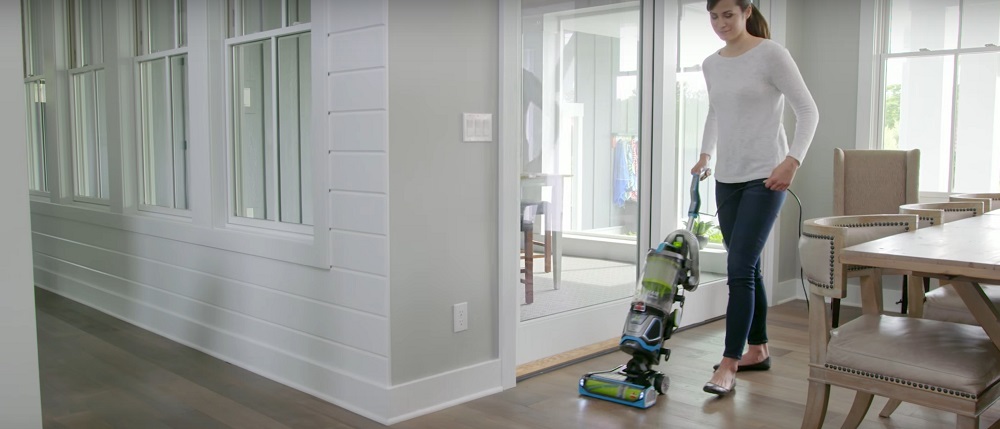
Finally, these vacuums have handles with switches and controls above the motor housing to ensure that you don’t have to bend too far when vacuuming.
For a long time, the main challenge associated with upright vacuums has been their lack of flexibility. Traditional upright vacuums were great for cleaning floors, but they were very limited in other uses. It was impossible to clean narrow crevices and above-ground areas like ceilings, upholstery, and curtains using these vacuums.
This problem has been addressed by modern upright vacuum designs that incorporate long hoses and extension wands that can be coupled with several and used when cleaning these hard to reach areas. As a result, these newer upright vacuums provide you with an all-round vacuuming solution for all parts of your home.
2. Robot Vacuums
The first vacuum cleaners were large, bulky, and not very practical. With advances in technology, these devices have evolved into futuristic gadgets that do all the floor vacuuming work perfectly regardless of the floor surfaces.
As the name suggests, robot vacuums are vacuum cleaners that vacuum floors autonomously. They have complex navigation and collision avoidance systems guiding them around the house and preventing accidents from happening.
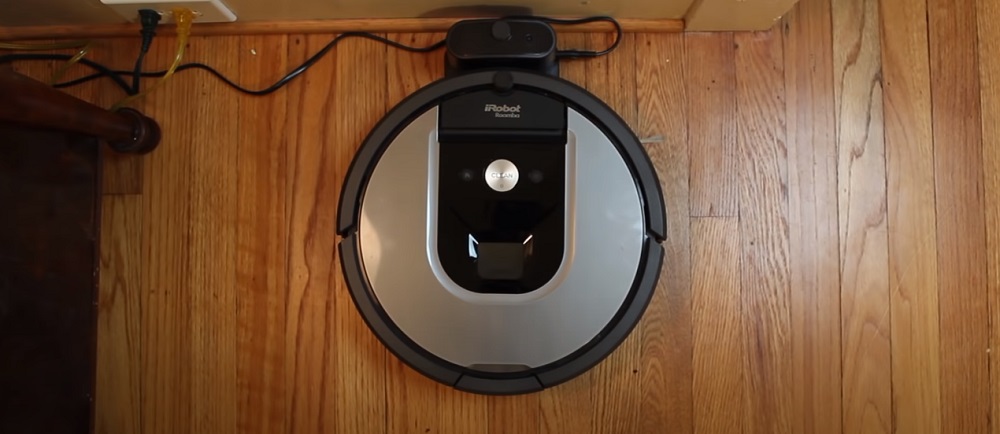
In addition to the navigation systems, some robot vacuums also have intelligent sensors that detect the specific floor type they are on and adjust the cleaning parameters to achieve the best results.
Many of these devices will know when their batteries need charging and head back to the charging dock for a charge before proceeding with the remaining parts. The high-end ones will even empty their dust collection bins automatically.
Another special category of robot vacuum cleaners is the hybrid vacuum and mop category. These robots come with a mopping pad in addition to the standard robot vacuum features. This pad enables the device to mop your floors as it vacuums to give even better results than what you’d have achieved after vacuuming.
The biggest setback that comes with robot vacuums is that they are only meant for cleaning your floors. If you want a device that can also be used for cleaning above ground areas like your upholstery, car, or the ceiling, you will need to purchase a separate device.
3. Stick Vacuums
This is another popular category of stick vacuums mainly because they provide a solution that no other vacuum can provide. Stick vacuums are very portable devices for quick cleanup jobs. They are usually small, compact, and more affordable than canister and upright vacuums.
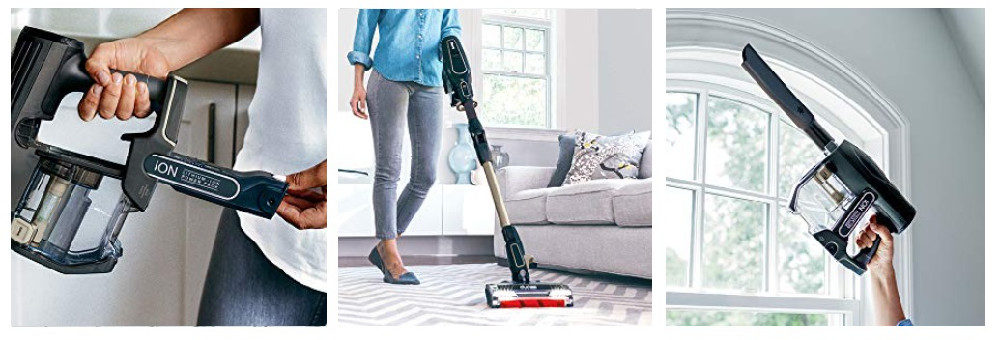
Most of these vacuums are shaped like a stick with three main parts: the floor tool, the extension wand or stick, and the motor housing that also houses the filters, debris collection bins, and the controls. Many stick vacuums can be converted to handheld vacuums by simply removing the wand and connecting accessories directly to the motor housing.
There are two main broad categories of stick vacuums depending on the power source. The first category is comprised of cordless stick vacuums that are powered by batteries placed within the motor housing. The second category consists of corded stick vacuums that need to be plugged into a power outlet when in operation.
Cordless stick vacuums give you unlimited reach but for that, you get a limited runtime before you have to plug in to charge the batteries. Some models try to overcome this by having detachable batteries that you can remove and charge separately. This way, you can buy extra batteries to increase the runtime to whatever you need.
On the other hand, corded stick vacuums give you unlimited runtime but you have to pay with limited reach. You can only clean as far as the cord can go.
The biggest setback that comes with stick vacuums is the fact that they are usually smaller and less powerful devices hence they may not perform as well as your canister or upright vacuums especially when dealing with strongly embedded stains.
4. Canister Vacuums
Canister vacuum cleaners come with a very conspicuous design that makes them stand out from any other type of vacuum cleaner. In some markets, these vacuums are referred to as cylinder vacuums. They have two main parts joined together by a flexible hose.

The first part is the floor tool or dust collector that is used to pick up dirt and debris from different floor surfaces. The second part is the canister that houses the motor, the dust collector, controls, and the filter or bag.
This design gives canister vacuums a big advantage when it comes to flexibility and maneuverability. You can attach different heads for different tasks and achieve much more with the same vacuum. It’s also easier to maneuver because all the heavy parts of the vacuum are strategically placed in the canister so you’ll only have to lift a lightweight wand with the tool or attachment that you need for the particular job.
The biggest challenge with canister vacuums is usability. Although the wand is lightweight and easy to maneuver, you also have to keep moving the canister as you clean and this usually involves a lot of bending. It’s also easy to damage walls and furniture as you drag the bulky canister around. Storing the vacuum is another problem because it eats up more space than most other vacuums.
5. Hand-held Vacuum
As the name suggests, handheld vacuums are small, portable vacuum cleaners that are popular for cleaning small messes on above-ground areas. Many of these vacuums are battery-powered hence they are very easy to use on different high and low surfaces.
They are lightweight and compact, hence you can use them in areas where most other vacuum cleaner types would have maneuverability problems. They are also easy to carry and easy to store hence they are great options for smaller living spaces like RVs or small apartments.
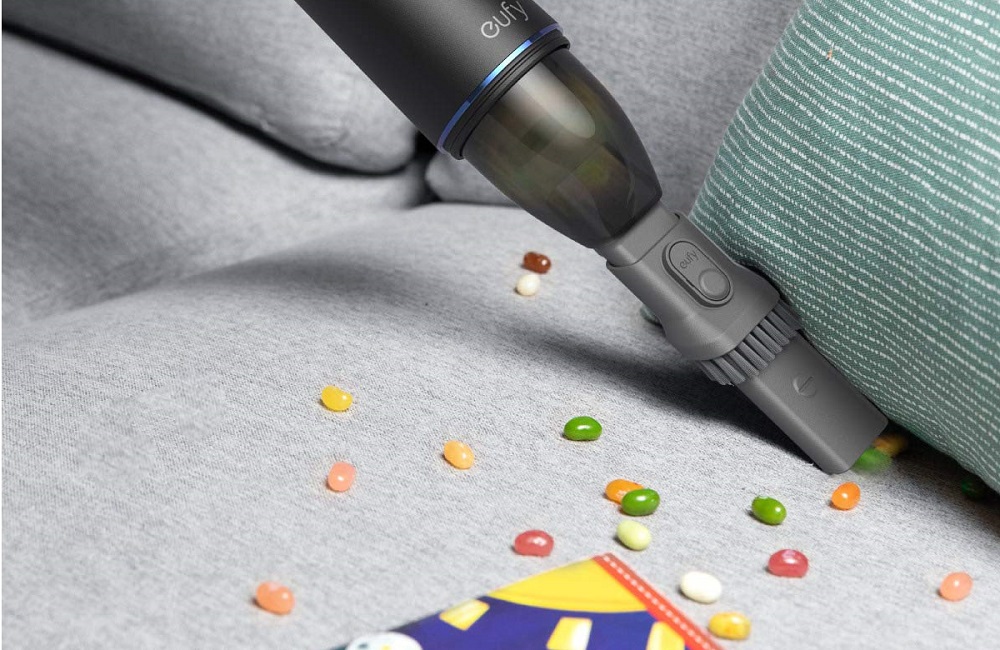
They may be versatile and great for quick cleanups but to be fair, we have to mention that they are not the best options for cleaning large areas in your home. They are however very affordable and easy to maintain that it wouldn’t hurt to have one in addition to a larger vacuum cleaner for large open spaces. The added convenience and time savings in quick cleanups makes these vacuums worthwhile.
6. Upright Wet/Dry Vacuums
These vacuums are very similar to the standard upright vacuum cleaners mentioned above, but they come with extra capabilities that you wouldn’t find in standard vacuum cleaners. Wet/Dry upright vacuums have an edge over the standard upright vacuums in that they can clean both wet and dry messes.
They are usually tougher hence they generally have stronger suction than the uprights intended for dry stains only. This means that wet/dry upright vacuums can pick up larger and heavier debris hence they are better suited for more demanding environments like shops and workshops.
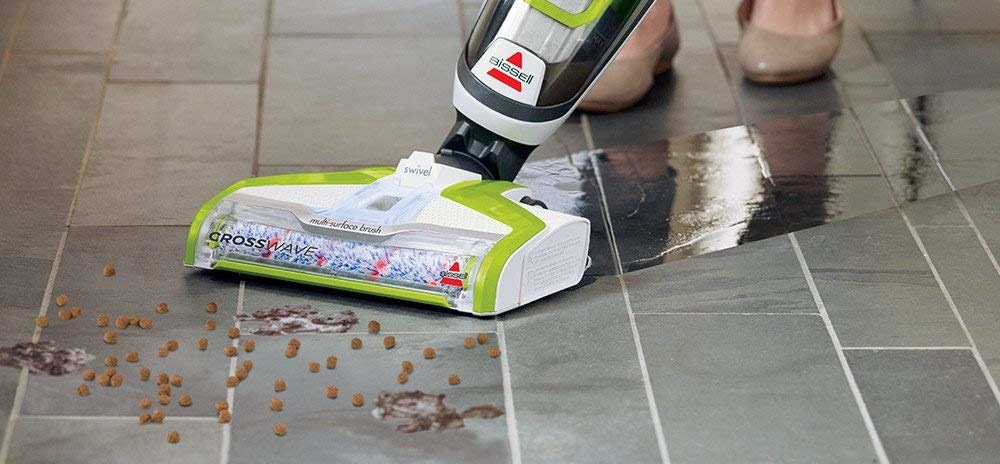
7. Canister Wet/Dry Vacuums
These are heavy-duty canister vacuums with the ability to pick up wet messes. Many of these vacuums are made for use in commercial establishments hence they are usually built tougher than any other vacuum cleaner type. They usually come with large-capacity stainless steel drums and tough castors to withstand the tough commercial requirements.
In addition to the tough outer stainless steel shell, these vacuums also come with stronger and more powerful motors hence they can pick up heavier debris like bolts, nails, nuts, and other metals typically found on a workshop floor.
8. Handheld Wet/Dry Vacuums
These vacuums are small and portable hence can be easily used around tight spaces while at the same time adding the extra capability of picking up wet messes. These vacuums are usually cordless to give you the extra flexibility especially when working on outdoor spaces or in the car.
Since they are wet vacuums, these devices will typically come with filters that can’t be damaged by water. This usually means that you can rinse them off in running water when they get dirty and save yourself the cost of buying replacement filters.
9. Central Vacuums
One of the biggest challenges that powerful vacuum cleaners have is maneuverability. This is because these vacuums will typically have large and powerful motors that are usually big and heavy, hence hard to move around.
Central vacuums have been designed to try and solve this problem. They are vacuums that have the motor, filters, and dirt collection chambers located in a central, fixed location. They are also known as built-in vacuum cleaners.
They are easy to maneuver because you only have to worry about moving the hose and cleaning head. The upside is that you get access to strong suction that will have no problem picking up all manner of debris from any floor type you might have without dragging a heavy canister around.
Another benefit is the fact that noise is significantly reduced because the powerful motor doesn’t have to be present in the room being cleaned. This also means that exhaust air is not recirculated back into your living areas hence you enjoy clean breathing air that doesn’t have any of the fine particles picked up from the floor. This is a big benefit if you suffer from allergies.
The biggest downside of central vacuums is the initial installation costs. These vacuums need more components and you will need to hire a professional to have it installed.
10. Backpack Vacuums
As the name suggests, backpack vacuums are vacuums that you carry around on your back like you would carry a backpack. These appliances are very similar to canister vacuums in that the motor, filters, and dirt collection chambers are fitted inside one unit that is designed to be carried on the back. You then get a hose and different cleaning heads for picking up dirt from different surfaces.
Backpack vacuums are great when you have to quickly move around large areas because you won’t keep bending to move the vacuum. The backpack design makes it easy to carry and use because all the weight is moved from your hand to your back.
The elimination of wheels is another benefit that comes with these vacuums because it ensures that you don’t leave any marks on floors as you clean. It also ensures that the vacuum’s wheels don’t transfer dirt from one surface to the other.
The obvious downside is in the fact that the vacuum is a load that you will have to bear throughout the vacuuming operation.
11. Pet Vacuums
These are vacuums designed specifically for handling pet messes. Pet hair can be difficult to deal with using ordinary vacuum cleaners. Some of these vacuums will roll it in balls and leave them on the floor while others will simply not be able to pick it up from the floor. Others will pick it up, but it will go in and clog filters and cause motors to burn out.
This is the reason why pet vacuums are necessary for homes with pets. These vacuums come with brushes that penetrate the carpet fibers and rake out any hair that could have gone inside. Since pet hair does not only go to the floor, pet vacuums also come with upholstery cleaners for removing pet hair from your upholstery.
Then there is the dander that can be a problem if you have allergies. Most pet vacuums come with HEPA filters that catch the dander and prevent it from being recirculated back into your home through the exhaust air.
Finally, pet vacuums have specially designed filtration systems that ensure that the pet hair does not clog the filters and result in suction loss or motor problems.
12. Shoulder Vacuums
This is another group of vacuum cleaners that gets its name from the way it is carried during use. Needless to say, shoulder vacuums are intended to be worn on the shoulder. They come with a single strap that is worn around your shoulder – a design inspired by shoulder bags.
This strap carries the main body of the vacuum that houses the motor, filters, and dust collection bin. Some models also have a handle above the main body to give you a second option of carrying the vacuum if you prefer not to use the strap – a feature that’s also inspired by some shoulder bags.
These vacuums are usually small and lightweight when compared to most other vacuums. As a result, moving them around is easier even if you are working in tight spaces that would have been hard to reach with other vacuums.
They also come with a hose that connects the main body to whichever tool you need to use for vacuuming. With this in mind, shoulder vacuums are therefore smaller and lighter versions of backpack vacuums. They give you the benefit of a backpack vacuum while staying compact and lightweight. They are, however, less powerful.
13. Stationary Vacuums
Also known as built-in wall vacuums, stationary vacuums are appliances that are made to do the job of dustpans. However, they do this more efficiently because you don’t have to bend over to pick up the collected dirt, and they don’t leave that familiar tiny line of fine particles that no one ever manages to sweep onto the dustpan.
These vacuums are popular in hair salons and other high-traffic commercial environments because of space savings and ease of use. These vacuums have openings at the bottom where dirt and debris from your floors get sucked in.
To use these vacuums, you simply sweep dirt close to the vacuum’s inlet and it will be sucked in. This way, the vacuum cleaner stays stationary regardless of the type of debris being collected. With that said, this vacuum is only suitable for hard floors because it would not be very effective on carpeted floors.
Types of Carpet Cleaners
14. Upright Carpet Cleaner
Although most vacuum cleaners do a decent job of cleaning carpets, carpet cleaners go a step further to give you even better results. Upright carpet cleaners come with the familiar design found in upright vacuums. They are operated by being pushed back and forth on the carpets and the cleaning tool at the bottom gets the carpets clean.
Upright carpet cleaners combine the power of a vacuum cleaner with aggressive brushing and agitation action in the presence of liquid carpet cleaning solutions to ensure that all stains are removed from your carpets.
These appliances work by dispensing controlled amounts of the cleaning solution onto the carpet then agitating the dirt using a bristle brush roll in the floor tool to dislodge any stains. Once this is done, the dirty cleaning solution is sucked into the collection chamber.
This process produces much better results than dry vacuuming.
15. Spot/Portable Carpet Cleaner
Portable carpet cleaners are compact devices that will clean stubborn stains from your carpets. These devices will go a step further to remove stains that can’t be removed using dry vacuum cleaners. They use brushes and carpet cleaning solutions to moisten dirt and remove the stains.
Essentially, they work similar to upright carpet cleaners, but they are much smaller in size. As a result, they are better suited for hard to reach areas that can’t be cleaned using upright carpet cleaners. They are also more affordable thanks to this smaller size.
Types of Steam Cleaners
16.Canister Steam Cleaners
Canister steam cleaners are appliances that you use for steam cleaning different surfaces in your home. These devices come in a familiar design with three main parts: the canister, the hose, and the cleaning head.
The canister holds the water reservoir and the other heavier parts of the appliance so that you don’t have to lift a heavy load with every pass. The cleaning head is a lightweight and maneuverable tool for getting the steam to the different surfaces that you’d like to clean. These two components are joined together by the hose.
Most steam cleaners come with different accessories for the cleaning head that will ensure that you face no problem getting steam to different surfaces. These accessories usually include a pad for steaming floors, scrubbing brushes, and sprayers.
17. Steam Mops
As the name suggests, steam mops are mops that clean floors and carpets using steam. This means that they don’t need any detergents or bleaches to clean hence they are friendly to the environment. Your only input will be the water that will be heated to produce steam for mopping and disinfecting the various surfaces.
The mops come with a microfiber pad for soaking up the dirt that may be present on the floors. Steam is sprayed directly to the mopping pad through a set of nozzles to soak the pad while at the same time transferring some of the heat to the floor.
One big benefit of using steam mops is how fast your floors will dry up after mopping. Thanks to the high temperatures involved, any moisture left on the floor will quickly evaporate to leave you with a dry and clean floor surface.
18. Garment Steamers
Another common steam appliance is the garment steamer. Garment steamers are appliances that you use to quickly polish your appearance without taking up too much space. To better understand their function, let’s think about their alternatives: iron boxes.
If you find that you need to do some last-minute emergency de-creasing on your clothes before heading out, an iron box would be a big inconvenience. You would require an ironing board and an iron box. This setup takes too much space which is never available when traveling.
Garment steamers are easy to use, portable, and very compact. As a result, they are ideal solutions when you are traveling. Another big bonus is the fact that they won’t scorch your clothes. They work by releasing bursts of steam directly onto the creases on your clothes.
To use garment steamers, you just need to fill the water reservoir with distilled water, allow some time to heat up and you’ll be ready to go!
Types of Air Cleaners
19. Air Purifiers
Also known as HEPA air purifiers, these are devices that help you achieve and maintain clean indoor air. They work by forcing ambient air through a set of filters to get rid of any unwanted particles or other air pollutants like bad odors, volatile organic compounds, or smoke.
These devices move the air using powerful fans hence you can expect a relatively higher level of noise as the air is forced through the filter depending on the fan speed you choose. Air purifiers are usually very effective in dealing with many types of impurities and you won’t have to wait very long to see the results.
20. Air Ionizers
On the other hand, air ionizers are devices that use electrically charged ions to remove impurities from the air. They work by releasing negatively charged ions into the air to bond with impurities such as dust present in the air. The impurities then become too heavy to float and fall on flat surfaces such as the floor where they can be wiped or vacuumed up. Some models come with washable electrostatic collection plates that attract and trap these heavy particles as they fall from the air to make cleanup faster and easier.
Types of Washing Machines
21. Top Load
Top load washing machines are the simplest and usually the most affordable types of washing machines. They come with openings at the top for adding and removing clothes hence the name top-load washing machines.
There are two types of top-load washing machines depending on the level of user involvement required. The first type is semi-automatic top-load washing machines that will need your input when moving from one task to the other in the wash cycle i.e. from washing to rinsing etc. They are less convenient to use but this makes them more affordable.
The other type is the fully automatic top-loading washing machine. In these machines, you just need to load the clothes, choose the cleaning program and they will take care of the rest.
22. Front Load
As the name suggests, front load washing machines are washing machines with an opening at the front for adding or removing clothes. These machines are fully automatic and they also come with different washing programs for different cleaning needs.
These machines generally cost more than top load washing machines but in the long run, you get to save more because water and electricity consumption is relatively lower in these models. You can also save space by stacking the machines or fit them in cabinets because everything is accessible from the front.
The biggest downside is the lack of a way to add clothes mid-cycle because it would result in water spillage. You will also have to bend to add or remove clothes from the drum which is usually going to be below your waist.
23. Portable Washers
Most washing machines are large and bulky hence moving them from one place to another can be quite a challenge. If you have a second home, moving around can be problematic if you have to move a large and heavy washing machine.
Fortunately, portable washers are made for this purpose. They are intended for areas where portability and space savings are more important than capacity. They are therefore common in dorms. Hostels, RVs, or small apartments.
24. Twin Tub
As the name suggests, twin tub washing machines come with two tubs. The main tub, usually found on the left, has the primary role of washing, rinsing, or soaking clothes while the second tub is used to spin the moisture out of the clothes.
Most of the twin tub models in the market are semi-automatic hence you will need to give your input after each task. You will also need to physically move the clothes from the first tub to the other to commence the spinning operation.
This website is supported by readers. As an Amazon Associate we earn from qualifying purchases.
If you have feedback, please add them below in the comment section.






